If you’re one of the millions of Americans who suffer from back pain, you’re probably always looking for ways to find relief. And while there are many treatments and therapies out there that can help, one of the simplest things you can do is to adjust your sleeping position.
Contents
Do You Have Back Pain? Knowing Your Sleep Style Is Important.
There are many people who suffer from back pain. The wrong position during sleep can make the pain worse. It is important to know your sleep style in order to find optimal spine alignment. This will allow you to get a good night’s rest and alleviate some of the back pain. There are four main sleep positions: side, back, stomach, and fetal. Each position has its own benefits and drawbacks.
Side sleeping is the most common position and is generally considered to be good for spine alignment. It can however cause neck and shoulder pain in some people. Sleeping on your back allows for the best blood circulation but can put a strain on your lower back if you do not have a firm surface to support it.
Stomach sleeping is not recommended as it can cause lower back pain and is not good for spine alignment. The fetal position is considered to be the best position for people with back pain as it allows for optimal spinal alignment.
If you suffer from sciatica back pain, it is important to experiment with different positions until you find one that is comfortable for you. Sleeping on your side with a pillow between your legs can help to reduce lower back pain. Sleeping on your stomach can be helpful if you place a pillow under your hips to reduce the strain on your lower spine.
If you suffer from neck pain, sleeping on your back with a pillow under your knees can help to take the pressure off of your neck muscles. Finding the best position to sleep in can be a challenge, but it is worth the effort if it means alleviating some of your back pain.
The Ideal Sleep Position Is On Your Back
Sleeping on your back is the ideal sleep position because it allows your spine to rest in its natural alignment. This is the best position for your spine because it prevents strain and pain. Many people find this position to be the hardest way to sleep, but it is worth the effort.
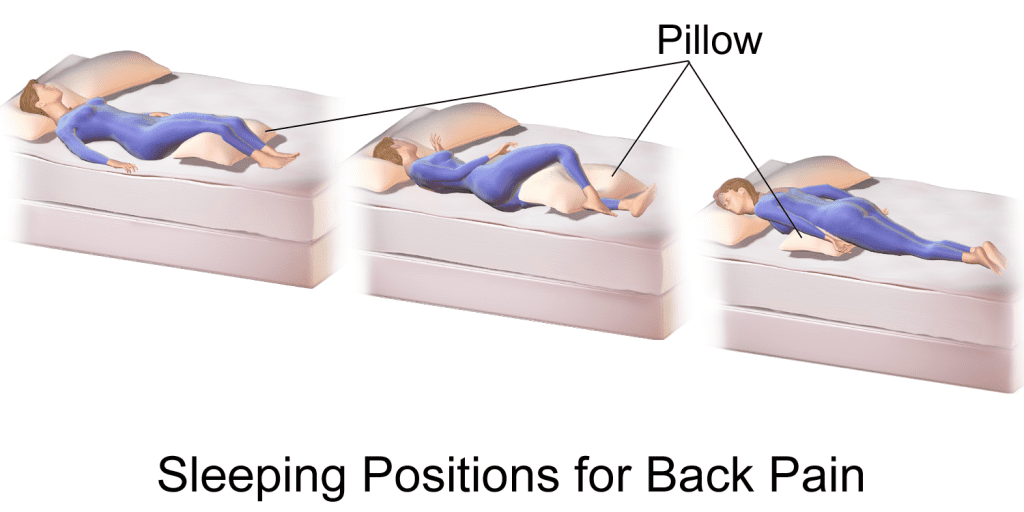
Sleeping on your back allows for the best blood circulation and prevents pressure on your heart and lungs. It also prevents strain on your knees and ankles. If you have a bad back, sleeping on your back with a pillow under your knees can help relieve pain.
Side Sleeping Is A Solid Runner-Up
Side sleeping is a solid runner-up when it comes to popular sleep styles. This is likely because it’s the position our bodies naturally default to when we first lie down—helpfully so since it’s great for overall alignment.
When you sleep on your side, “your legs are comfortably extended, and your spine and neck are in a neutral position,” demerit says. This decreases the likelihood of experiencing pain in those areas come morning. side sleeping also tends to be pretty good for pregnant women since it can help with both snoring and heartburn.
The Worst Sleep Position Is On Your Stomach
Sleeping on your stomach is generally considered the worst sleep position. It can cause back and spine pain, and can even lead to neck pain. There is no good way to sleep on your stomach, so it is best to avoid it altogether. If you find yourself waking up in pain, try changing your sleep style to side sleeping or back sleeping.
Best Sleeping Positions for Back Pain
With so many people experiencing back pain, you’d think we’d have figured out the best position to sleep in by now. Unfortunately, there is no perfect answer when it comes to finding the best sleeping positions for back pain. However, there are certain positions that are better than others.
Sleeping on your back is generally considered to be the best position for back pain. This is because it evenly distributes your weight and takes the pressure off of your spine. If you do sleep on your back, be sure to place a pillow beneath your knees to relieve any additional pressure.
Sleeping on your side is another good option for those with back pain. This position also takes the pressure off of your spine and allows your muscles to relax. If you do sleep on your side, be sure to draw your knees up slightly in order to keep your spine in alignment. It’s also important to avoid sleeping on your stomach if you have back pain, as this can actually aggravate existing issues.
Of course, the best sleeping position for back pain is not always possible. If you find yourself struggling to sleep in a comfortable position, make sure to consult with a doctor or physical therapist. There could be an underlying condition causing your pain that needs to be addressed.
Sleeping On Your Side
Sleeping on your side is generally considered the best position for people with back pain. However, many people find that they have issues when they first start sleeping in this position.
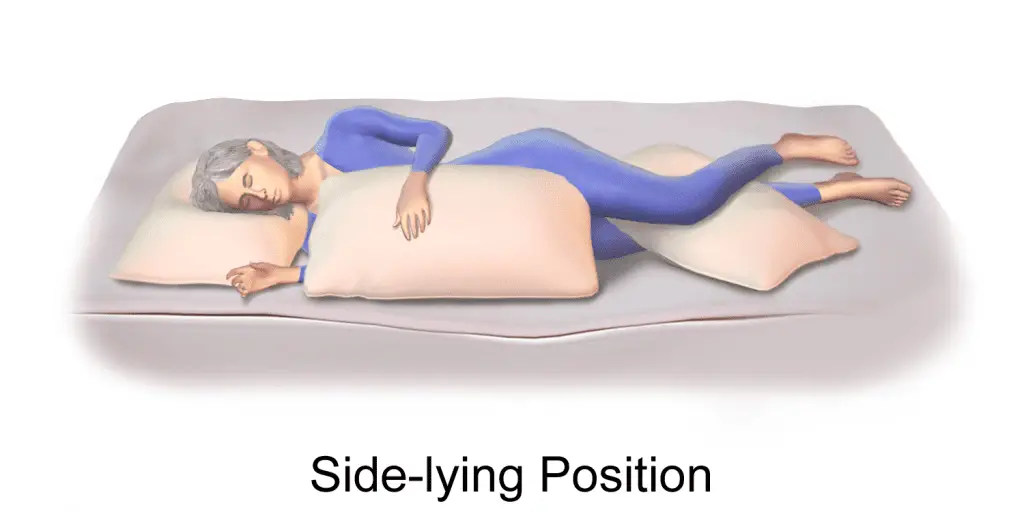
The main reason why sleeping on your side is so beneficial is because it takes the pressure off of your spine. When you sleep on your back, your head, neck, and spine are all in alignment. This can cause a lot of pressure on these areas and lead to pain.
Sleeping on your side allows your head, neck, and spine to be in a more neutral position. This helps to take the pressure off of these areas and can lead to less pain.
There are a few things that you can do to make sure that you are comfortable when sleeping on your side. First, you want to make sure that you have a pillow that supports your head and neck. You also want to make sure that your knees are slightly bent and that you have a pillow between them. This will help to keep your spine in alignment and reduce the amount of pressure on it.
You also want to make sure that you have a mattress that is firm enough to support your back but not too firm as this can also lead to pain. Finally, you want to make sure that your legs are not hanging over the edge of the bed as this can cause a muscle imbalance which can lead to pain.
Sleeping On Your Back
Sleeping on your back is generally considered to be the best position for people with back pain. This is because it allows your spine to rest in a neutral position and provides added support for your head, neck, and shoulders. It also helps to keep your internal organs in alignment.
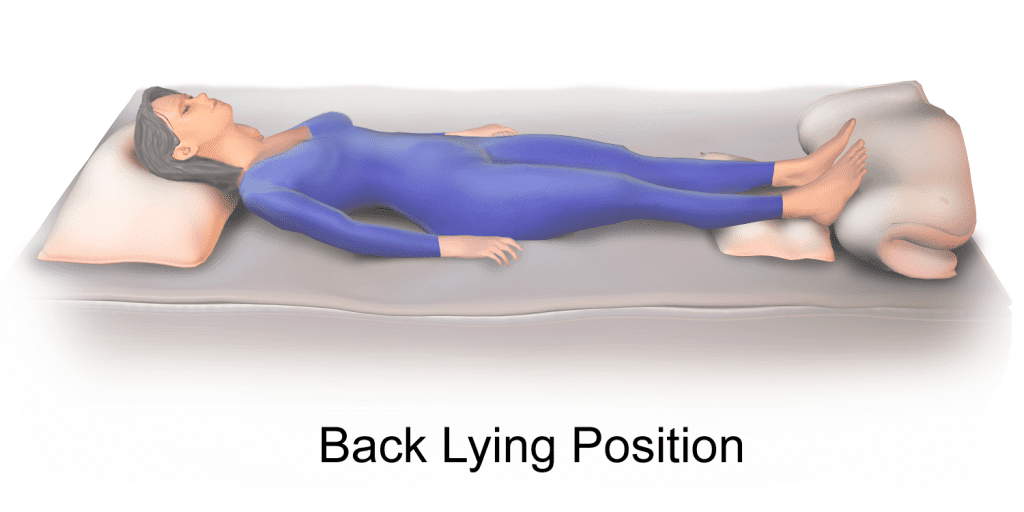
If you sleep on your back, be sure to use a pillow that supports your knees and a towel or other support under your lower back. This will help keep your spine in its natural curve and provide better alignment for your body.
Sleeping On Your Stomach
Sleeping on your stomach is generally considered to be the worst position for back pain. This is because when you sleep on your stomach, your back is forced into an extended and often awkward position. This can put a strain on your lower back and cause pain. Additionally, sleeping on your stomach can also cause stress on your discs and degenerative disc disease.
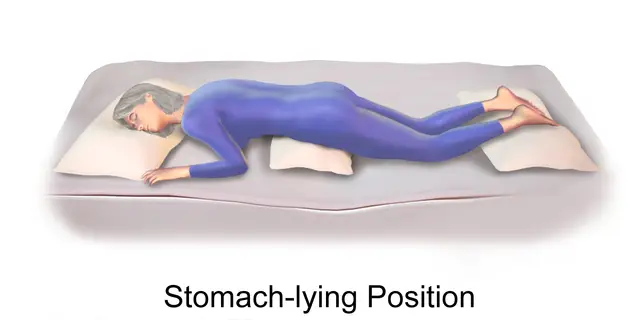
If you are experiencing back pain, you may want to try sleeping on your side with a pillow between your knees. This position can take the pressure off of your lower back and pelvis and help to reduce pain.
Sleep On Your Back In a Reclined Position
There are a number of things you can do to help relieve back pain, but one of the best is to sleep in the proper position. Sleeping on your back in a reclined position is the best alignment for your spine, and it’s also the best choice if you have isthmic spondylolisthesis.
If you don’t have a recliner or an adjustable bed, you can try sleeping in a chair with good back support. You can also use a small pillow to support your lower back. Remember, it’s important to keep your spine in alignment when you sleep so that you don’t aggravate your condition.
Proper Alignment Is Key
One of the best things you can do to reduce or eliminate back pain is to ensure that your spine is properly aligned when you sleep. This means that there should be no gaps between your body and the bed and that your entire spine should be in a straight line.
Many people believe that the best way to achieve this is to sleep on their backs, but this is not always the case. In fact, sleeping on your back can actually aggravate some forms of back pain. The important thing is to find a position that allows your spine to remain in proper alignment.
Sleeping on your side is often recommended for people with back pain, as it can help to reduce pressure on the spine. However, it is important to ensure that your knees are slightly elevated and that your chest is not slumped forward. This will help to keep your spine in alignment and reduce any gaps between your body and the bed.
If you are a stomach sleeper, it is important to ensure that you do not arch your back while you sleep. This can put unnecessary strain on the spine and lead to pain. Instead, try placing a pillow under your hips to help keep the natural curve of your spine intact.
What To Look For In a Pillow
 If you often wake up with a stiff neck or sore shoulders, it might be time to invest in a new pillow. When you’re lying down, your head should be level with your spine, so it’s important to find a pillow that is the right height.
If you often wake up with a stiff neck or sore shoulders, it might be time to invest in a new pillow. When you’re lying down, your head should be level with your spine, so it’s important to find a pillow that is the right height.
Your pillow should also support your neck and keep your head in alignment with your spine. Look for a pillow that is firm, but not too high. You should be able to rest your head on the pillow without your chin being pushed into your chest.
If you sleep on your side, you might want to try a body pillow. These pillows are long and narrow, and they can be draped over your body to provide support from your head to your knees. This can help keep your spine in alignment and relieve pressure on your hips and shoulders.
When you’re shopping for a new pillow, it’s important to find one that suits your sleeping position and provides the right amount of support. You should also look for a pillow that is comfortable and won’t cause you to wake up feeling sweaty or overheated.
What To Look For In a Mattress
When you’re shopping for a mattress, there are a few things you’ll want to keep in mind. First, consider what type of sleeper you are. If you sleep on your side, you’ll want a softer mattress that will contour your body. If you sleep on your stomach, you’ll want a firmer mattress to keep your hips from sinking too far down. And if you sleep on your back, you’ll want something in between the two extremes.
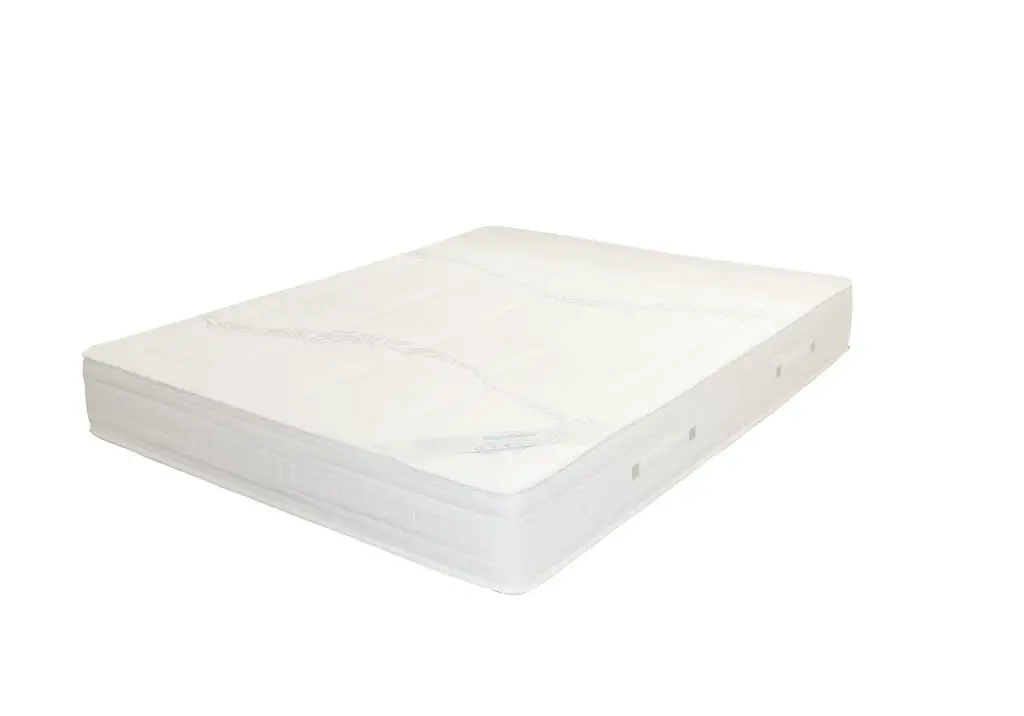
Second, think about what kind of support you need. People with back pain often find that firm orthopedic mattress provide the best support. But if you don’t have back pain, an inexpensive plywood board can provide just as much support as an expensive mattress—it’s all about personal preference.
Finally, keep in mind that most people spend about a third of their lives sleeping, so it’s worth investing in a comfortable mattress that will last for years. A good quality foam mattress can cost between $500 and $1,000, but it will last for at least 10 years with proper care.
In addition to finding the right mattress, there are a few other things you can do to ensure a good night’s sleep:
- Establish a regular sleep schedule and stick to it as much as possible
- Avoid caffeine and alcohol before bed
- Keep your bedroom dark and quiet
- Exercise regularly (but not right before bed)
Following these sleep hygiene tips should help you get the restful night’s sleep you need to feel your best during the day.
Frequently Asked Questions
How should I sleep to relieve back pain?
The best position to sleep in is on your back with a pillow under your knees. This position takes the pressure off your lower back.
Why is back pain worse at night?
There are a few possible explanations for why back pain is worse at night. One reason may be that you are less active during the day and your back muscles have a chance to tighten up. Another reason may be that you are lying in the same position for a long period of time, which can irritate the muscles and joints in your back. Finally, it is possible that your pain is caused by an underlying medical condition that is worse at night. If you are concerned about your back pain, you should talk to your doctor.
Should shoulders be on a pillow when sleeping?
There is no definitive answer to this question as everyone sleeps differently and therefore has different preferences. Some people find that sleeping with a pillow under their head and shoulders is more comfortable, while others prefer not to have a pillow at all. Ultimately, it is up to the individual to decide what is most comfortable for them.
back pain, sleep position, sleeping position, neck pain, sleeping positions, fetal position, sleep positions, good night, natural curve, dr. bang, spinal alignment, many people, sleep apnea, pain relief, memory foam, medium-firm mattress, neutral position, side sleeping, thin pillow, sleep hygiene, reclined position, sleep quality, proper alignment, stomach sleepers, side sleepers, shoulder pain, left side, medical center, pregnant women, firm pillow, relaxation, lumbosacral, herniation, lower back, thoracolumbar, overusing, degenerative discs, vertebral body, flexibility, osteoporosis, low back pain, Flexeril, spondylolisthesis, vertebral, fitness, healthier, herniated disc, insomnia, sleep deprivation, intervertebral disc, spondylosis, spinal, ache
Conclusion
There is no one perfect position to sleep in, but people with back pain may find relief by sleeping on their side with a pillow between their knees or by sleeping on their stomach with a pillow under their pelvis. Talk to your doctor about what position may be best for you and be sure to try different positions to see what provides the most relief. You may also find relief by maintaining a regular sleep schedule and waking up at the same time each day.

James Nystrom is a leading researcher in the field of hip pain. He has spent his career studying the latest treatments and techniques for relieving hip pain, and he is known for his innovative approach to care. He is passionate about helping his patients find relief from their pain and improving their quality of life. He is also a huge fan of inversion therapy and all things related to health and well-being.

